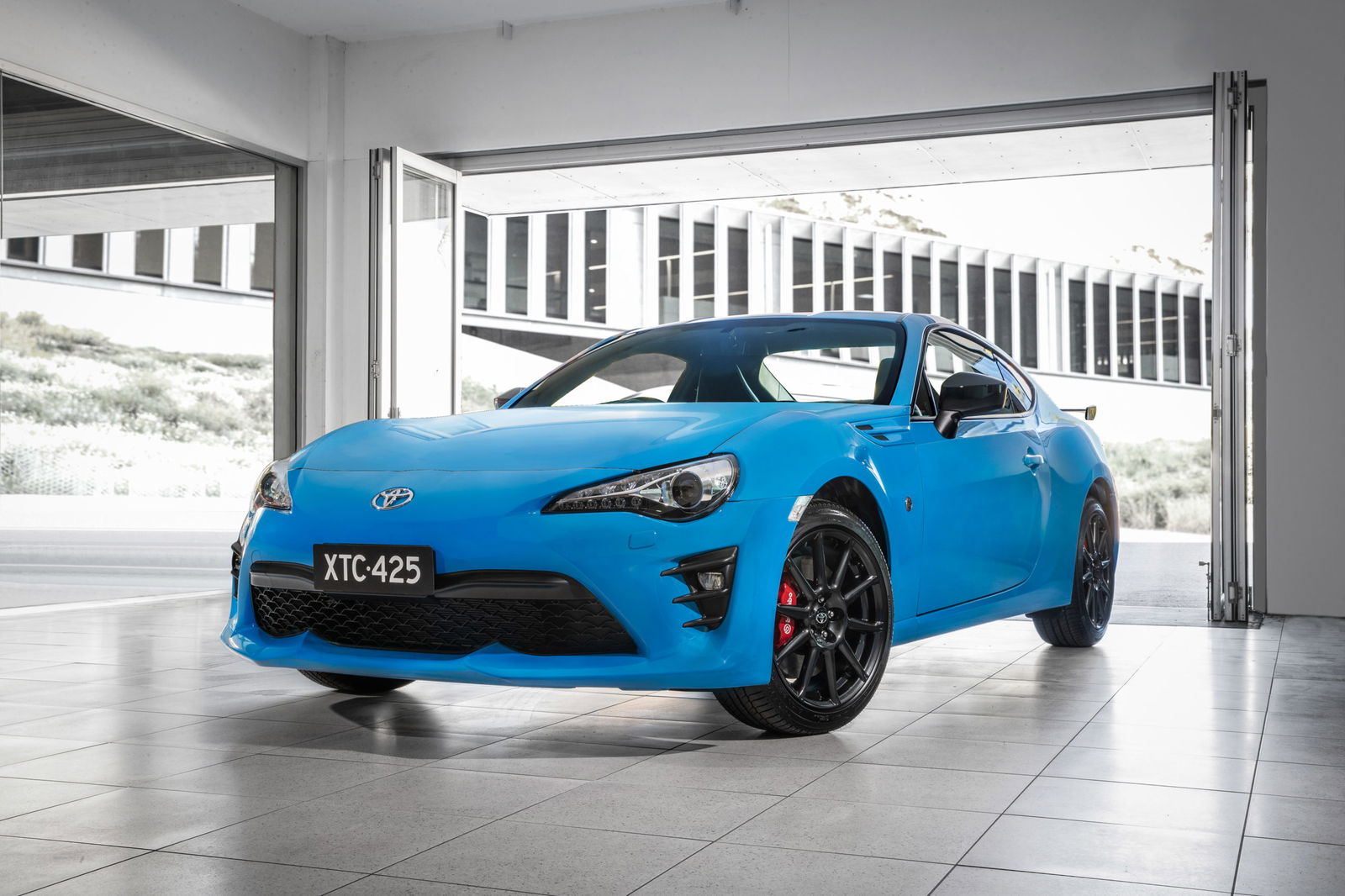
Eight-six.
Two numbers that heralded a new era for Toyota, one that simultaneously spoke to its past and its future.
When the Japanese brand launched the 86 sports coupe in 2012 it marked the start of the company’s attempt to shed its ‘whitegoods on wheels’ image. Under the leadership of Akio Toyoda, the brand wanted to return to its glory days of building fun, engaging cars to drive again after decades of dominance with the sensible but uninspiring Camry and RAV4.
Even a company as big as Toyota had to find a partner to help offset the cost of developing a relatively low-volume sports car, so it worked together with Subaru to create the 86 and its twin, the Subaru BRZ. The result was a car that utilised a Subaru platform adapted for rear-wheel drive and a 2.0-litre boxer engine for a lower centre-of-gravity for superior handling.
Like most sports cars sales of the pair have trailed off as they have aged but overall they have been deemed a success, especially in altering Toyota’s daudy image, and a replacement is on the way in the middle of 2021.
New name, new era
One of the most notable changes will be the name, with Toyota expected to call the new model the GR 86. That’s in keeping with the GR Supra and GR Yaris that fall under the Gazoo Racing brand the company is trying to build as part of its image adjustment. There are several more GR models reportedly in the works, including a Corolla hot hatch and hi-po HiLux, but those are stories for another day.
Toyota takes the lead

Another major difference for the next-generation 86/BRZ twins will be the switch to a Toyota platform. With no suitable rear-wheel drive architecture available from Subaru, the decision was taken to create a rear drive version of the modular Toyota New Global Architecture (TNGA).
Various iterations of TNGA already sit underneath the new Prius, Corolla, RAV4 and others and while they share many mechanical similarities, TNGA is as much a way of thinking as it is steel and aluminium. Toyota introduced the new architecture with a focus on making all of its cars fun to drive, not just the likes of the 86 and Supra, so the thinking behind all TNGA models is lower centre-of-gravity, more responsive handling and lower weight. All of which makes it ideal to underpin the new 86.
Turbocharged performance

Subaru provides the current engine and will continue that role for the new model, however, in good news for 86/BRZ fans who have called for more grunt, forced induction is coming with the new model. Subaru’s 2.4-litre turbocharged four-cylinder boxer is the most likely option to find its way under the bonnet of the new coupe.
In its current form (as found in the US-only Subaru Ascent SUV) it makes 190kW, so expect the 86/BRZ to offer at least that much; well up on the 152kW of the current 2.0-litre flat-four. It also makes 376Nm of torque which is another major upgrade over the existing 212Nm, which should add a lot more punch at the bottom end and through the middle of the rev range – a criticism of the current powerplant.
Coming soon

Pricing remains the biggest unknown, with much of the current car’s success built from its sub-$40k asking price. However, it’s believed Toyota is looking to address the criticism that the cabin of the original looks cheap, so any dramatic change to the interior fit and finish, as well as the turbocharged engine, could mean a price bump. Given the GR Supra doesn’t start until $84,900, there’s a lot of room for Toyota to play with. But pushing past the $40,000 mark would dent its appeal with the younger, less affluent audience.
The timing of the new model was confirmed in a seemingly leaked Toyota dealer document in the US, which indicated a northern hemisphere summer 2021 launch for the new model. That will likely mean a slightly later release in Australia but there’s every possibility it could be here by the end of next year.












Discussion about this post